V Chetboul
Cardiovascular effects of dietary salt intake in aged healthy cats: a 2-year prospective randomized, blinded, and controlled study
Chetboul, V; Reynolds, B S; Trehiou-Sechi, E; Nguyen, P; Concordet, D; Sampedrano, C C; Testault, I; Elliott, J; Abadie, J; Biourge, V; Lefebvre, H P
Authors
B S Reynolds
E Trehiou-Sechi
P Nguyen
D Concordet
C C Sampedrano
I Testault
J Elliott
J Abadie
V Biourge
H P Lefebvre
Abstract
High salt dry expanded diets are commercially available for cats to increase water intake and urine volume, as part of the prevention or treatment of naturally occurring urinary stone formation (calcium oxalates and struvites). However, chronic high salt intake may have potential cardiovascular adverse effects in both humans, especially in aging individuals, and several animal models. The objective of this prospective, randomized, blinded, and controlled study was to assess the long-term cardiovascular effects of high salt intake in healthy aged cats. Twenty healthy neutered cats (10.1±2.4 years) were randomly allocated into 2 matched groups. One group was fed a high salt diet (3.1 g/Mcal sodium, 5.5 g/Mcal chloride) and the other group a control diet of same composition except for salt content (1.0 g/Mcal sodium, 2.2 g/Mcal chloride). Clinical examination, systolic and diastolic arterial blood pressure measurements, standard transthoracic echocardiography and conventional Doppler examinations were repeatedly performed on non-sedated cats by trained observers before and over 24 months after diet implementation. Radial and longitudinal velocities of the left ventricular free wall and the interventricular septum were also assessed in systole and diastole using 2-dimensional color tissue Doppler imaging. Statistics were performed using a general linear model. No significant effect of dietary salt intake was observed on systolic and diastolic arterial blood pressure values. Out of the 33 tested imaging variables, the only one affected by dietary salt intake was the radial early on late diastolic velocity ratio assessed in the endocardium of the left ventricular free wall, statistically lower in the high salt diet group at 12 months only (P = 0.044). In conclusion, in this study involving healthy aged cats, chronic high dietary salt intake was not associated with an increased risk of systemic arterial hypertension and myocardial dysfunction, as observed in some elderly people, salt-sensitive patients and animal models.
Citation
Chetboul, V., Reynolds, B. S., Trehiou-Sechi, E., Nguyen, P., Concordet, D., Sampedrano, C. C., Testault, I., Elliott, J., Abadie, J., Biourge, V., & Lefebvre, H. P. (2014). Cardiovascular effects of dietary salt intake in aged healthy cats: a 2-year prospective randomized, blinded, and controlled study. PLoS ONE, 9(6), e97862. https://doi.org/10.1371/journal.pone.0097862
| Journal Article Type | Article |
|---|---|
| Acceptance Date | Apr 14, 2014 |
| Publication Date | Jun 28, 2014 |
| Deposit Date | Nov 11, 2014 |
| Publicly Available Date | Feb 4, 2019 |
| Journal | PLoS ONE |
| Electronic ISSN | 1932-6203 |
| Publisher | Public Library of Science |
| Peer Reviewed | Peer Reviewed |
| Volume | 9 |
| Issue | 6 |
| Pages | e97862 |
| DOI | https://doi.org/10.1371/journal.pone.0097862 |
| Public URL | https://rvc-repository.worktribe.com/output/1405365 |
| Additional Information | Corporate Creators : Atlantia Vet Hospital, Inserm, Paris, LUNAM, Paris-Est, Royal Canin France, Toulouse |
Files
8454.pdf
(565 Kb)
PDF
You might also like
Downloadable Citations
About RVC Repository
Administrator e-mail: publicationsrepos@rvc.ac.uk
This application uses the following open-source libraries:
SheetJS Community Edition
Apache License Version 2.0 (http://www.apache.org/licenses/)
PDF.js
Apache License Version 2.0 (http://www.apache.org/licenses/)
Font Awesome
SIL OFL 1.1 (http://scripts.sil.org/OFL)
MIT License (http://opensource.org/licenses/mit-license.html)
CC BY 3.0 ( http://creativecommons.org/licenses/by/3.0/)
Powered by Worktribe © 2025
Advanced Search
